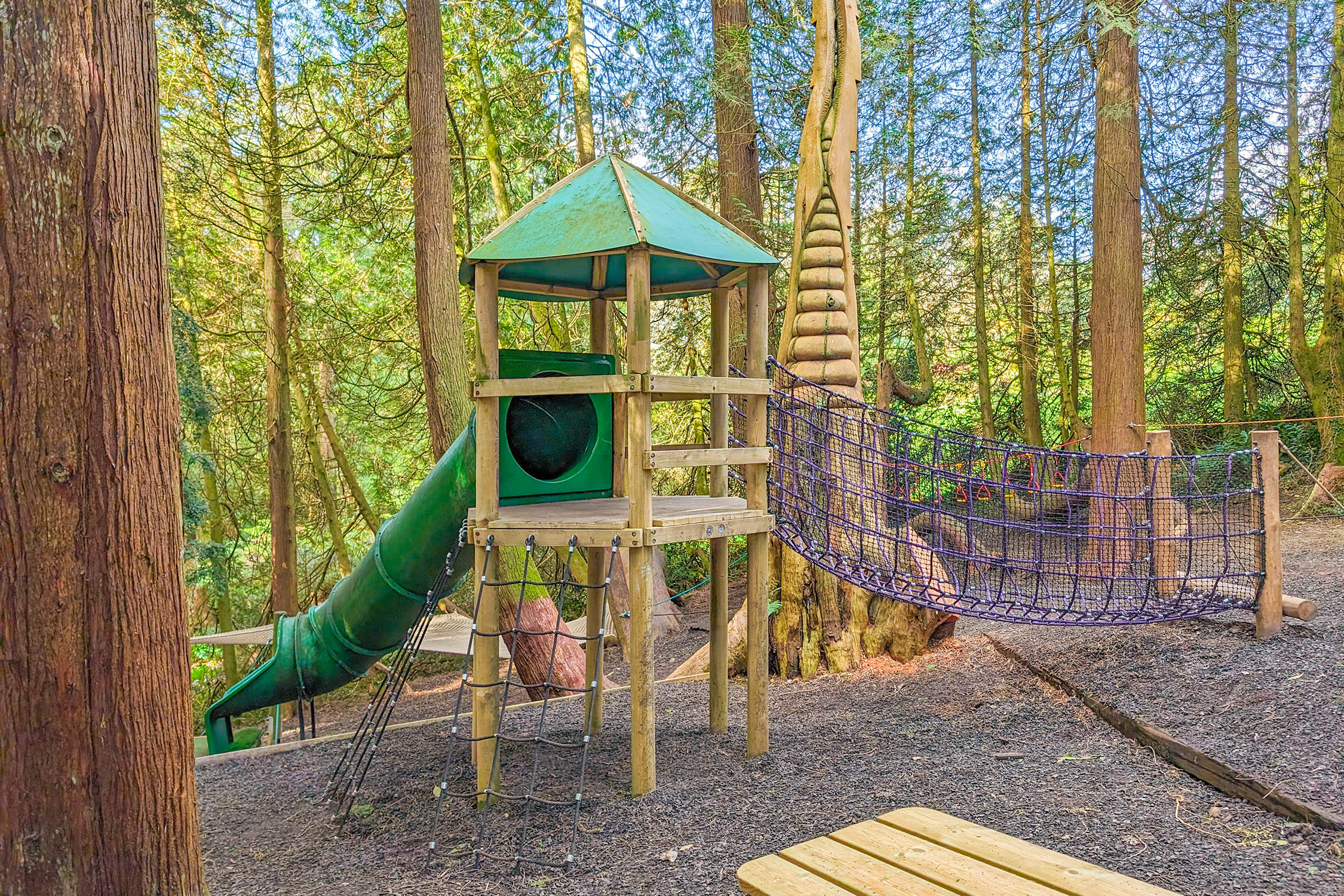How it began
Wherever I go I look out for bees - honey bees in particular. I look to see on which plants they are feeding and how common they are. Back in 2014 on my visit to Trebah Gardens there were plenty of bumblebees but I didn't see any honey bees. That felt sad in such a beautiful garden. I started to wonder about the possibility of placing one of my own hives of bees there.
Permission
Early this year I was very excited to meet Darren Dickey the head gardener to talk about the idea. I was so pleased that he had already investigated the Natural Beekeeping website www.biobees.com and was very enthusiastic. The location he had identified out of the way of the public seemed fine. Darren said he needed to obtain approval from the management and then we could go ahead.
Installing the hive - May 2015
Darren cleared the site and laid slabs ready for us to bring the hive which I had made from scrap wood. I sealed the outside with a mixture of linseed oil and beeswax.
Getting the Bees - June 2015
I built a bait box along the same lines as the top bar hive but a lot shorter, so that the bars and comb can easily be transferred to the top bar hive. I baited it with a piece of empty comb and rubbed around the entrance with lemongrass, both of which attract bees in a swarm. We put it on a shed roof at the end of April and a month later a swarm of bees moved in! We left them to settle for 9 days and then brought them to Trebah. We placed the bees in the same place that the new hive would be situated so that they could have a few days undisturbed getting used to their new surroundings.
We observed the hive for the next couple of weeks and were worried when we didn't see much activity, even though we had seen bees carrying a little bit of pollen into the hive, normally a good sign.
When we went to transfer the bees, our worst fears were confirmed; there was no queen, no brood and very few bees. They had built a very small amount of comb. I wonder what had happened? Did the queen and bees decide to leave and find a new home? We just don't know. The only thing to do is try again!
Trying again!
We had another bait hive set up, and on the 22nd June a swarm moved in. What a relief! One week later we brought it to Trebah. You can see we have put the box on top of the hive so that the bees can get used to the surroundings before being transferred.
In early July we transferred the combs and bees.
Next was a worrying sight:
The comb at 8 days old. The bee grubs were just being sealed in their cells with the biscuit coloured wax cappings. The central area should look evenly covered but we could see what is called a pepper pot brood pattern. It is caused by the worker bees removing sick grubs from their cells. I was worried that it may be due to a notifiable bee disease. I contacted the bee inspector and we agreed that we would check the colony again in a couple of weeks.
We checked the hive again and found chalk brood larvae on the floor of the hive. The combs had healthy looking brood and no signs of the worrying diseases. Chalk brood is not good, but a colony can recover from it and go on to thrive.
Autumn 2015
In September we removed the bottom board and used a torch and mirror to look up inside through the floor mesh. We could see that the colony was still small. I did not want to disturb this vulnerable colony by examining the hive from the inside at this stage. I thought I might check for any varroa mites at the same time. I put a white laminated card, greased with vegetable oil, below the mesh on top of the bottom board. After 5 days we collected the card and only found one varroa that had dropped through the mesh. This is very low, which is encouraging.
The colony has remained busy but still small. We hope it will survive the winter. We may decide to give them some feed later on in the winter or early spring if their stores are looking low. We will let you know how they get on.


